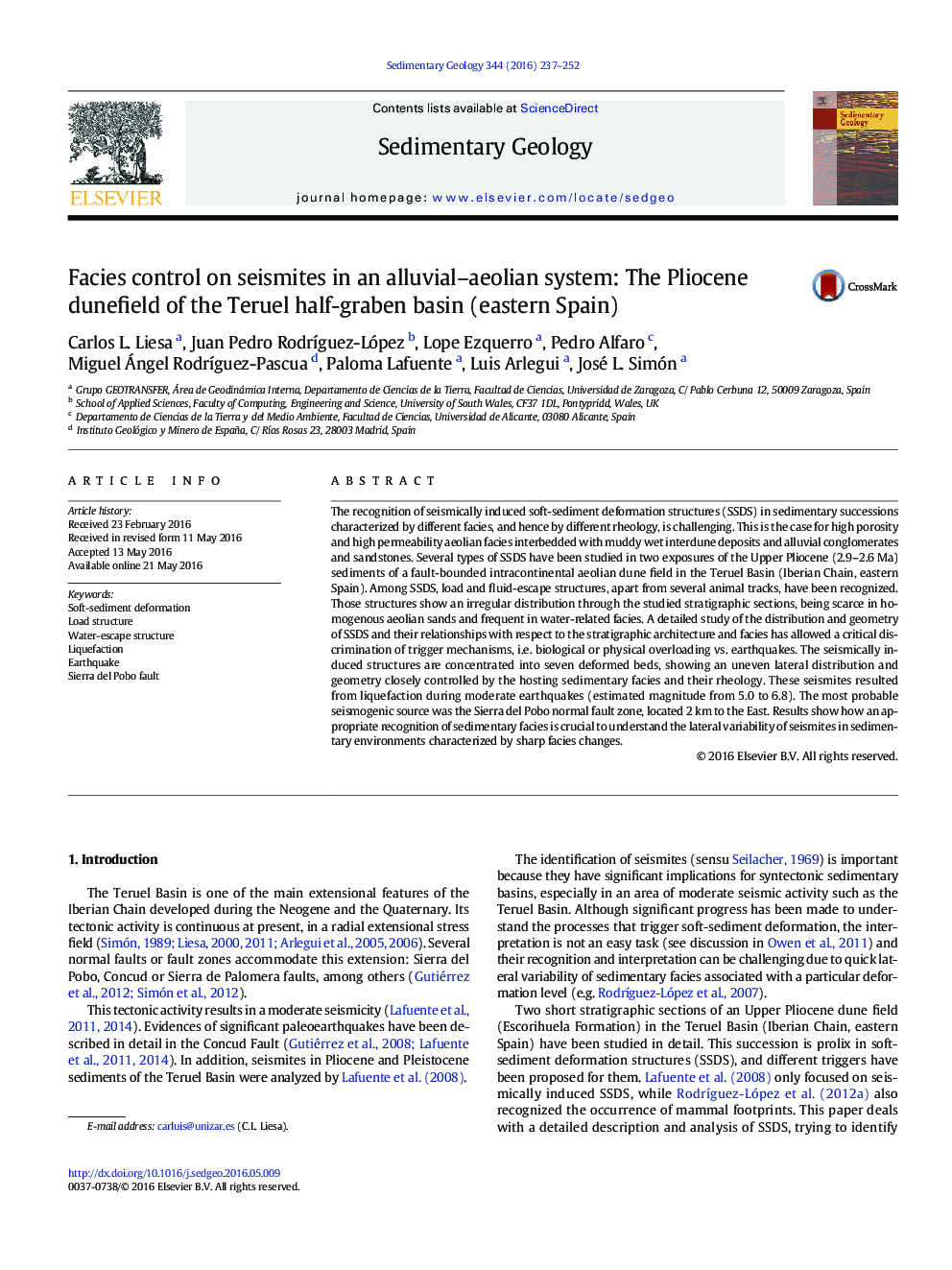| Article ID | Journal | Published Year | Pages | File Type |
|---|---|---|---|---|
| 4688960 | Sedimentary Geology | 2016 | 16 Pages |
The recognition of seismically induced soft-sediment deformation structures (SSDS) in sedimentary successions characterized by different facies, and hence by different rheology, is challenging. This is the case for high porosity and high permeability aeolian facies interbedded with muddy wet interdune deposits and alluvial conglomerates and sandstones. Several types of SSDS have been studied in two exposures of the Upper Pliocene (2.9–2.6 Ma) sediments of a fault-bounded intracontinental aeolian dune field in the Teruel Basin (Iberian Chain, eastern Spain). Among SSDS, load and fluid-escape structures, apart from several animal tracks, have been recognized. Those structures show an irregular distribution through the studied stratigraphic sections, being scarce in homogenous aeolian sands and frequent in water-related facies. A detailed study of the distribution and geometry of SSDS and their relationships with respect to the stratigraphic architecture and facies has allowed a critical discrimination of trigger mechanisms, i.e. biological or physical overloading vs. earthquakes. The seismically induced structures are concentrated into seven deformed beds, showing an uneven lateral distribution and geometry closely controlled by the hosting sedimentary facies and their rheology. These seismites resulted from liquefaction during moderate earthquakes (estimated magnitude from 5.0 to 6.8). The most probable seismogenic source was the Sierra del Pobo normal fault zone, located 2 km to the East. Results show how an appropriate recognition of sedimentary facies is crucial to understand the lateral variability of seismites in sedimentary environments characterized by sharp facies changes.
